Back up SQL Server on Azure Stack
This article describes how to configure Microsoft Azure Backup Server (MABS) to protect SQL Server databases on Azure Stack.
SQL Server databases protection workflow
Management of the SQL Server database backup to Azure and recovery from Azure involves:
- Create a backup policy to protect SQL Server databases
- Create on-demand backup copies
- Recover the database from Disks, and from Azure
Prerequisites and limitations
- If you've a database with files on a remote file share, protection will fail with Error ID 104. MABS doesn't support protection for SQL Server data on a remote file share.
- MABS can't protect databases that are stored on remote SMB shares.
- Ensure that the availability group replicas are configured as read-only.
- You must explicitly add the system account NTAuthority\System to the Sysadmin group on SQL Server.
- When you perform an alternate location recovery for a partially contained database, you must ensure that the target SQL instance has the Contained Databases feature enabled.
- When you perform an alternate location recovery for a file stream database, you must ensure that the target SQL instance has the file stream database feature enabled.
- Protection for SQL Server Always On:
- MABS detects Availability Groups when running inquiry at protection group creation.
- MABS detects a failover and continues protection of the database.
- MABS supports multi-site cluster configurations for an instance of SQL Server.
- When you protect databases that use the Always On feature, MABS has the following limitations:
- MABS will honor the backup policy for availability groups that's set in SQL Server based on the backup preferences, as follows:
- Prefer secondary - Backups should occur on a secondary replica except when the primary replica is the only replica online. If there are multiple secondary replicas available, then the node with the highest backup priority will be selected for backup. If only the primary replica is available, then the backup should occur on the primary replica.
- Secondary only - Backup shouldn't be performed on the primary replica. If the primary replica is the only one online, the backup shouldn't occur.
- Primary - Backups should always occur on the primary replica.
- Any Replica - Backups can happen on any of the availability replicas in the availability group. The node to be backed up from will be based on the backup priorities for each of the nodes.
-
Note
- Backups can happen from any readable replica - that is, primary, synchronous secondary, asynchronous secondary.
- If any replica is excluded from backup, for example Exclude Replica is enabled or is marked as not readable, then that replica won't be selected for backup under any of the options.
- If multiple replicas are available and readable, then the node with the highest backup priority will be selected for backup.
- If the backup fails on the selected node, then the backup operation fails.
- Recovery to the original location isn't supported.
- MABS will honor the backup policy for availability groups that's set in SQL Server based on the backup preferences, as follows:
- SQL Server 2014 or above backup issues:
- SQL server 2014 added a new feature to create a database for on-premises SQL Server on Microsoft Azure Blob storage. MABS can't be used to protect this configuration.
- There are some known issues with "Prefer secondary" backup preference for the SQL Always On option. MABS always takes a backup from secondary. If no secondary can be found, then the backup fails.
Before you start
Install and prepare Azure Backup Server.
Create a backup policy
To create a backup policy to protect SQL Server databases to Azure, follow these steps:
On the Azure Backup Server, select the Protection workspace.
On the tool menu, select New to create a new protection group.
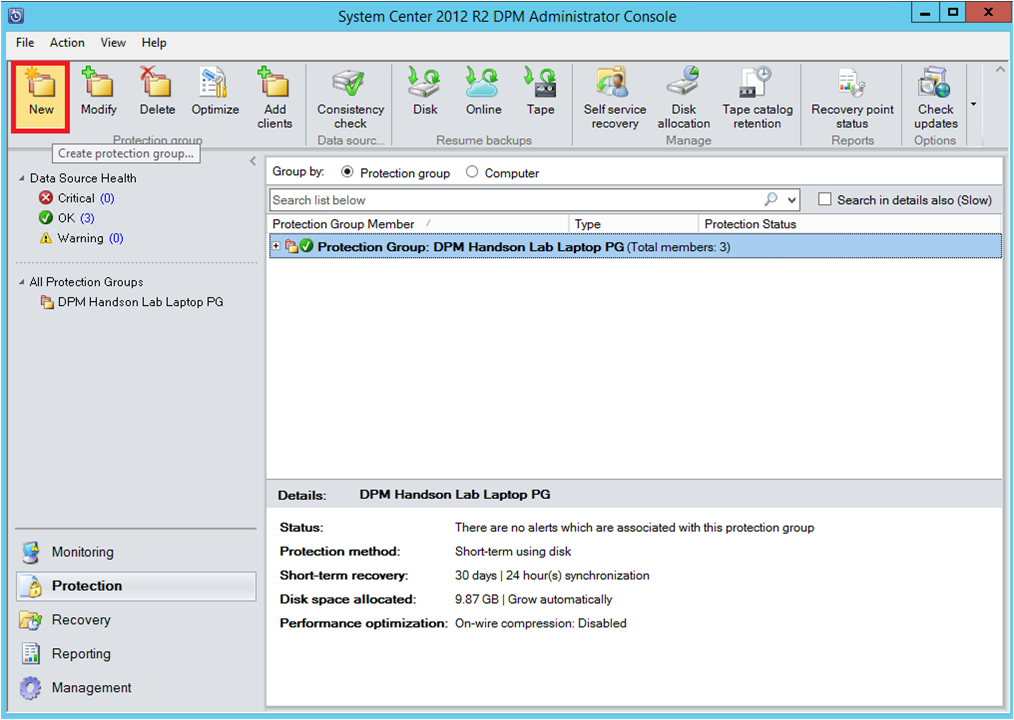
Azure Backup Server starts the Protection Group wizard, which leads you through creating a Protection Group. Select Next.
On the Select Protection Group Type blade, select Servers.
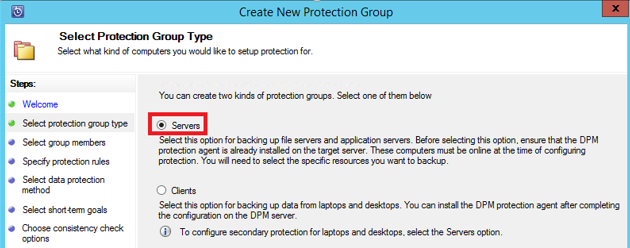
On the Select Group Members blade, the Available members list displays the various data sources. Select + to expand a folder and reveal the subfolders. Select the checkbox to select an item.
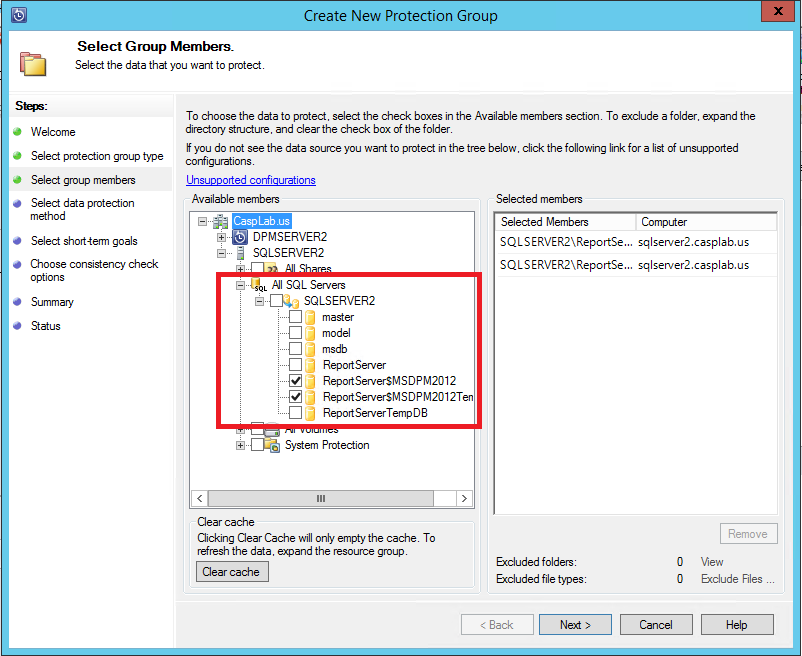
All selected items appear in the Selected members list. After selecting the servers or databases you want to protect, select Next.
On the Select Data Protection Method blade, provide a name for the protection group and select the I want online Protection checkbox.
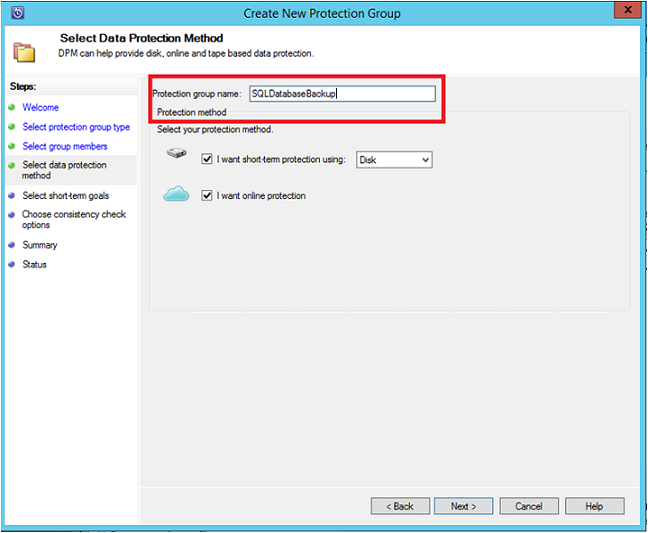
On the Specify Short-Term Goals blade, include the necessary inputs to create backup points to disk, and select Next.
In the example, Retention range is 5 days, Synchronization frequency is once every 15 minutes, which is the backup frequency. Express Full Backup is set to 8:00 P.M.
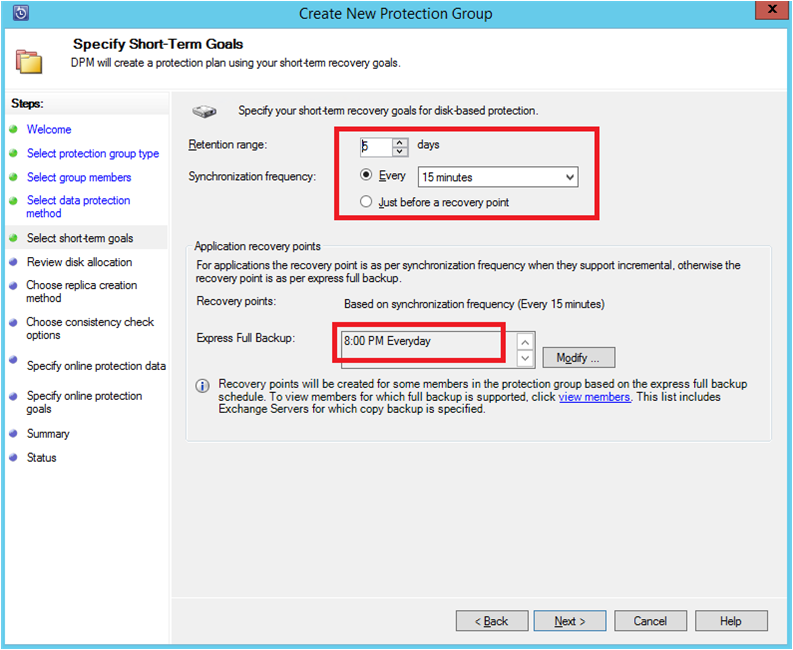
Note
In the example shown, at 8:00 PM every day a backup point is created by transferring the modified data from the previous day’s 8:00 PM backup point. This process is called Express Full Backup. Transaction logs are synchronized every 15 minutes. If you need to recover the database at 9:00 PM, the point is created from the logs from the last express full backup point (8PM in this case).
On the Review disk allocation blade, verify the overall storage space available, and the potential disk space. Select Next.
On the Choose Replica Creation Method, choose how to create your first recovery point. You can transfer the initial backup manually (off network) to avoid bandwidth congestion or over the network. If you choose to wait to transfer the first backup, you can specify the time for the initial transfer. Select Next.
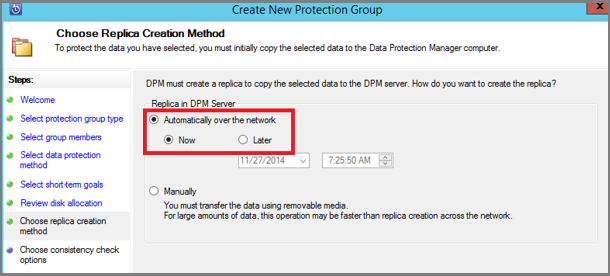
The initial backup copy requires transferring the entire data source (SQL Server database) from production server (SQL Server computer) to Azure Backup Server. This data might be large, and transferring the data over the network could exceed bandwidth. For this reason, you can choose to transfer the initial backup: Manually (using removable media) to avoid bandwidth congestion, or Automatically over the network (at a specified time).
Once the initial backup is complete, the rest of the backups are incremental backups on the initial backup copy. Incremental backups tend to be small and are easily transferred across the network.
Choose when you want the consistency check to run and select Next.
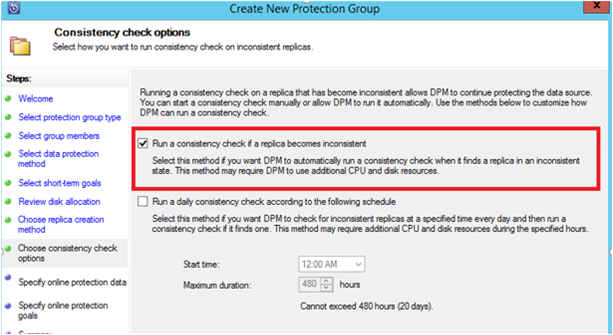
Azure Backup Server performs a consistency check on the integrity of the backup point. Azure Backup Server calculates the checksum of the backup file on the production server (SQL Server computer in this scenario) and the backed-up data for that file. If there's a conflict, it's assumed the backed-up file on Azure Backup Server is corrupt. Azure Backup Server rectifies the backed-up data by sending the blocks corresponding to the checksum mismatch. Because consistency checks are performance-intensive, you can schedule the consistency check or run it automatically.
To specify online protection of the datasources, select the databases to be protected to Azure and select Next.
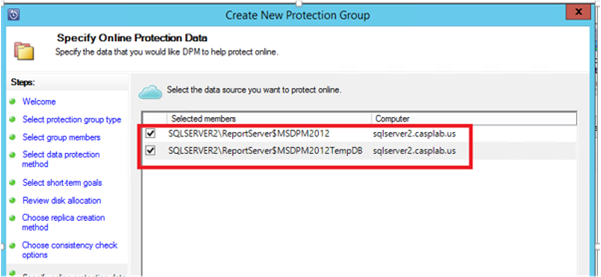
Choose backup schedules and retention policies that suit the organization policies.
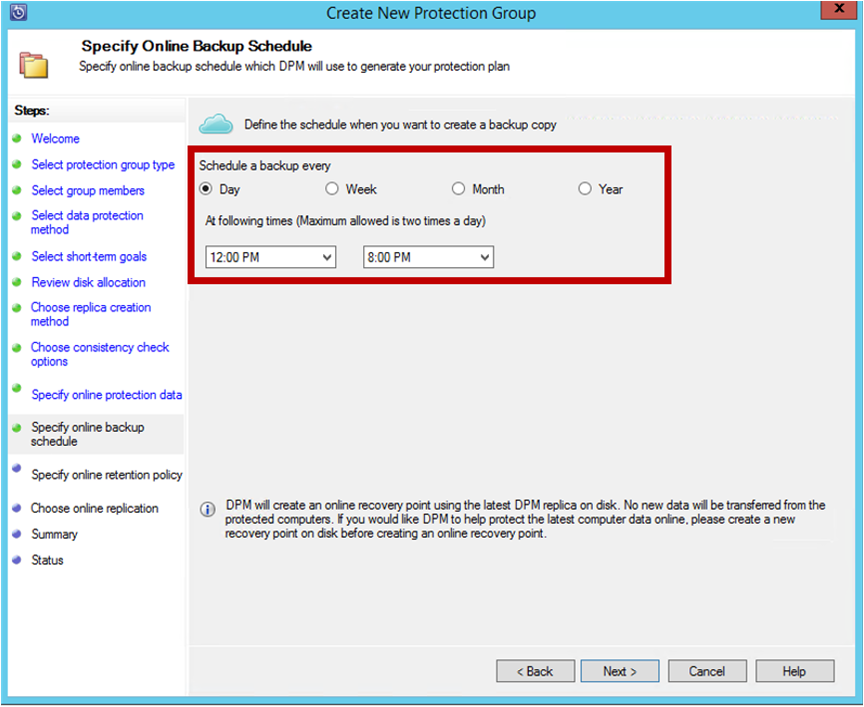
In this example, backups are taken once a day at 12:00 PM and 8 PM.
Note
It’s a good practice to have a few short-term recovery points on disk, for quick recovery. These recovery points are used for operational recovery. Azure serves as a good offsite location with higher SLAs and guaranteed availability.
Best Practice: If you schedule backups to Azure to start after the local disk backups complete, the latest disk backups are always copied to Azure.
Choose the retention policy schedule. The details on how the retention policy works are provided at Use Azure Backup to replace your tape infrastructure article.
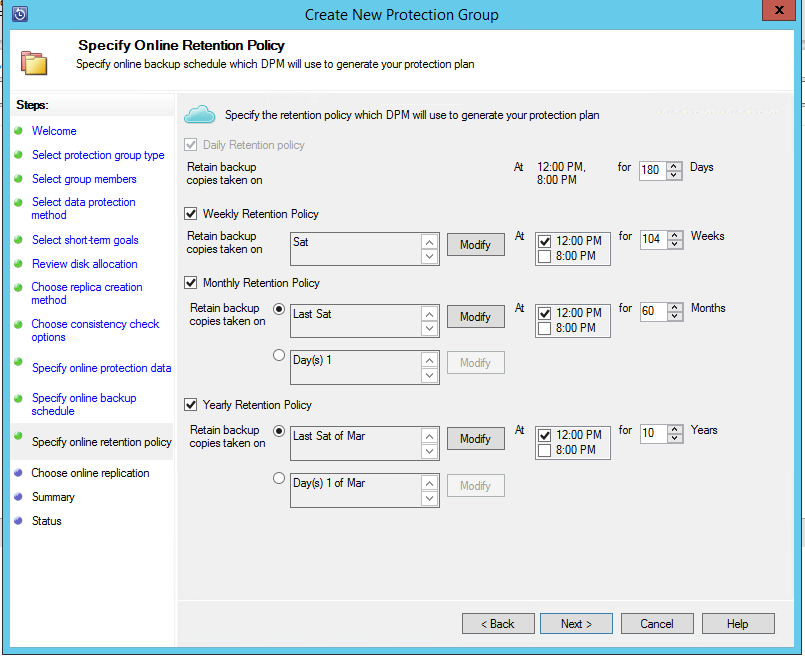
In this example:
- Backups are taken once a day at 12:00 PM and 8 PM and are retained for 180 days.
- The backup on Saturday at 12:00 P.M. is retained for 104 weeks
- The backup on Last Saturday at 12:00 P.M. is retained for 60 months
- The backup on Last Saturday of March at 12:00 P.M. is retained for 10 years
Select Next and select the appropriate option for transferring the initial backup copy to Azure. You can choose Automatically over the network
Once you review the policy details in the Summary blade, select Create group to complete the workflow. You can select Close and monitor the job progress in Monitoring workspace.
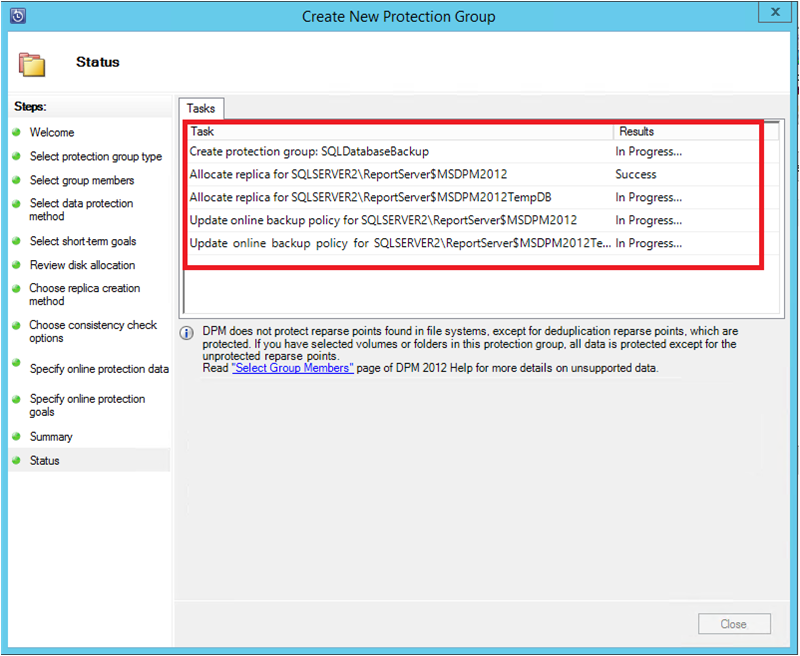
Run an on-demand backup
A recovery point is created only when the first backup occurs. After creating a backup policy, you can trigger the creation of a recovery point manually, rather than waiting for the scheduler to take the backup.
To run an on-demand backup of a SQL Server database, follow these steps:
Wait until the protection group status shows OK for the database before creating the recovery point.
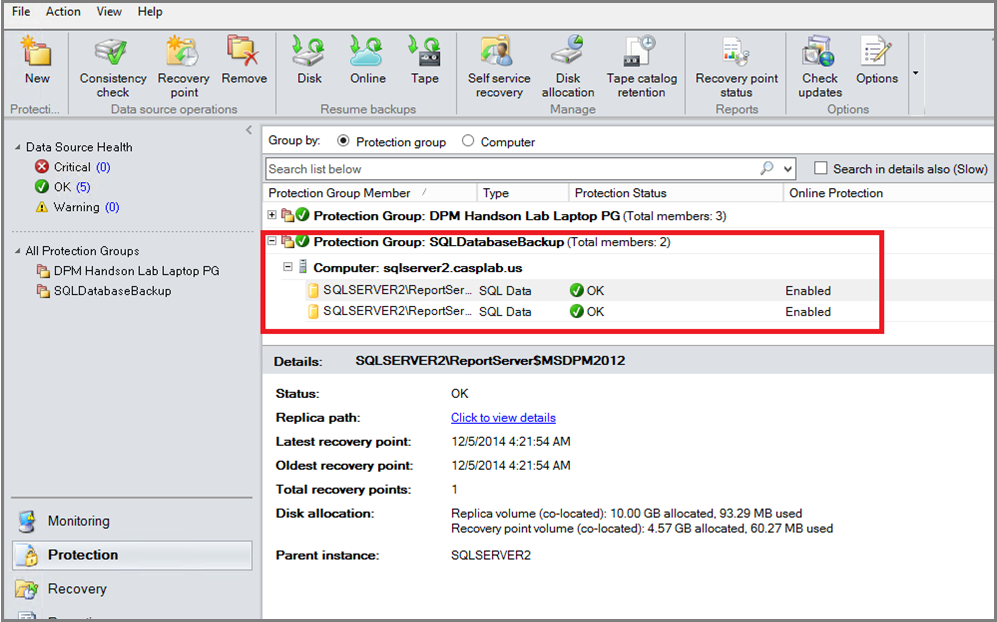
Right-click the database and select Create Recovery Point.
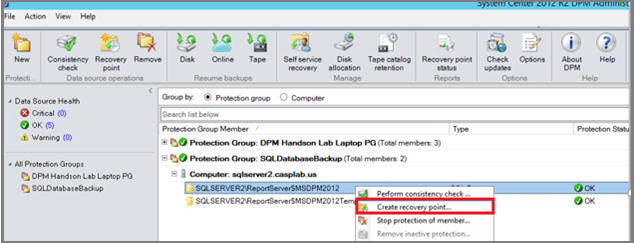
Choose Online Protection in the drop-down menu and select OK to start creation of a recovery point in Azure.
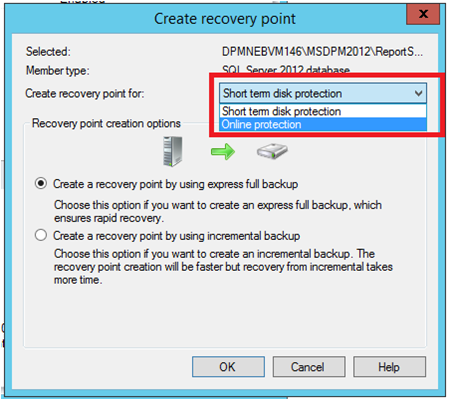
View the job progress in the Monitoring workspace.
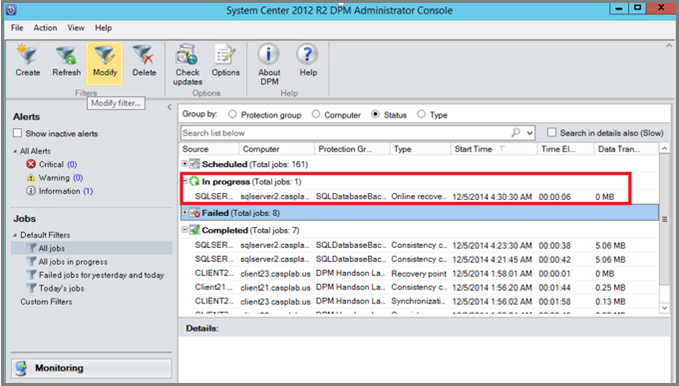
Recover the database from Azure
To recover a protected entity (SQL Server database) from Azure, follow these steps:
Open the Azure Backup Server Management Console. Navigate to Recovery workspace where you can see the protected servers. Browse the required database (in this case ReportServer$MSDPM2012). Select a Recovery from time that's specified as an Online point.
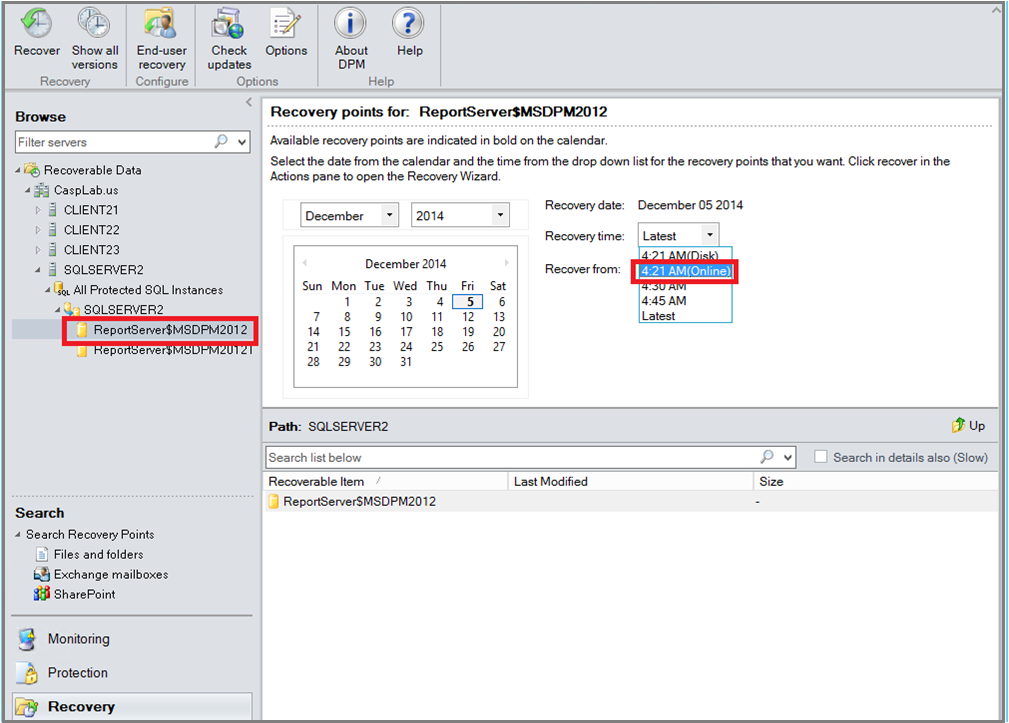
Right-click the database name and select Recover.
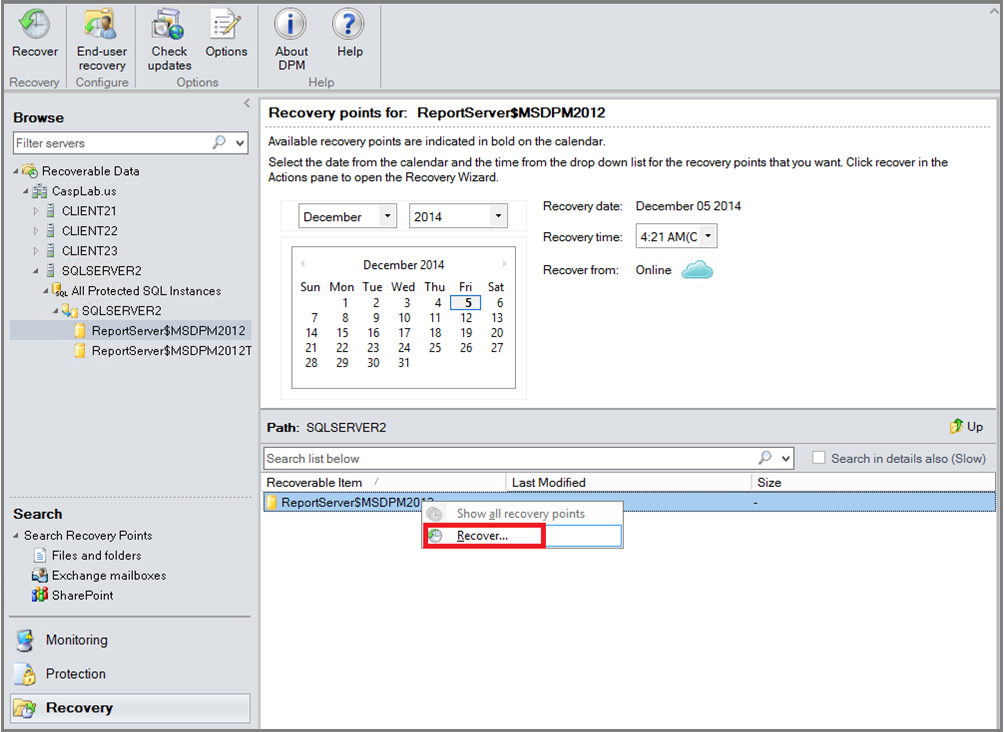
MABS shows the details of the recovery point. Select Next. To overwrite the database, select the recovery type Recover to original instance of SQL Server. Select Next.
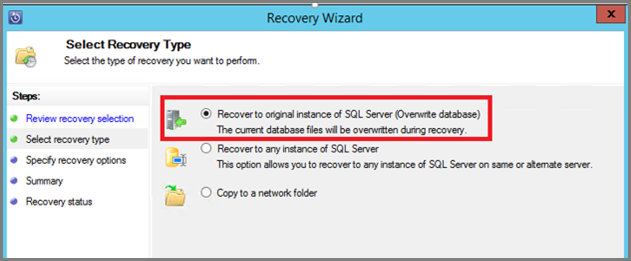
In this example, MABS recovers the database to another SQL Server instance, or to a standalone network folder.
On the Specify Recovery options blade, you can select the recovery options like Network bandwidth usage throttling to throttle the bandwidth used by recovery. Select Next.
On the Summary blade, you see all the recovery configurations provided so far. Select Recover.
The Recovery status shows the database being recovered. You can select Close to close the wizard and view the progress in the Monitoring workspace.
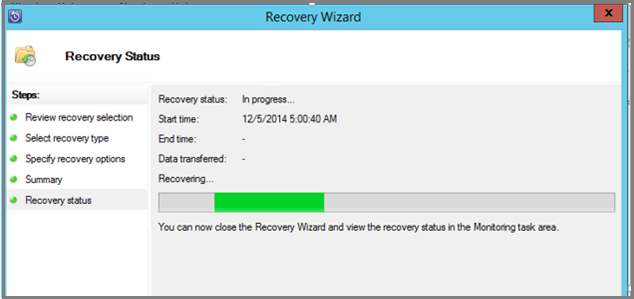
Once the recovery is completed, the restored database is application consistent.
Next steps
- Back up files and application article.
- Back up SharePoint on Azure Stack article.